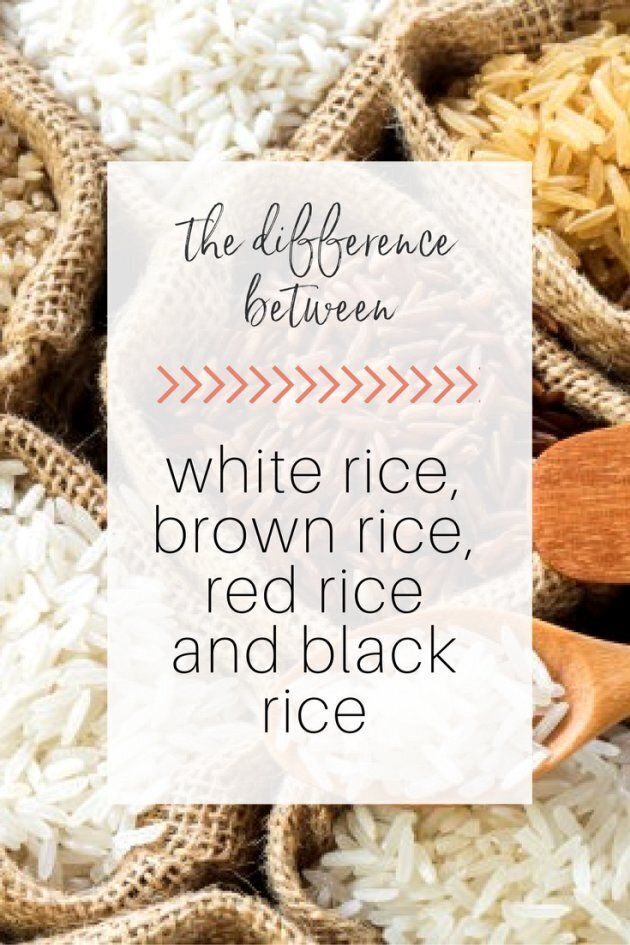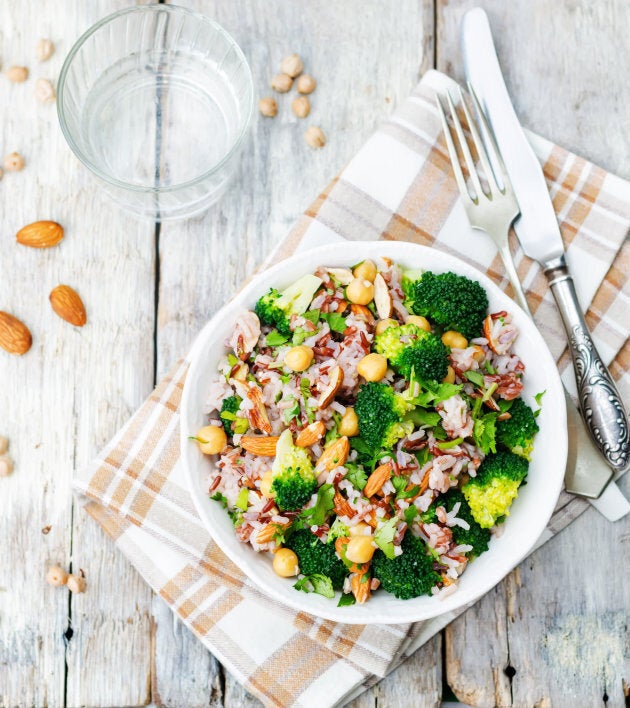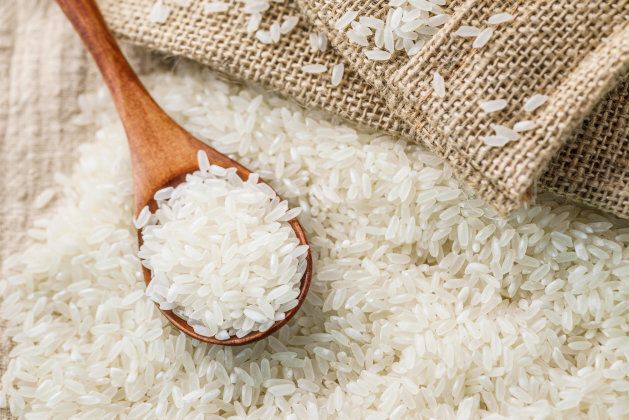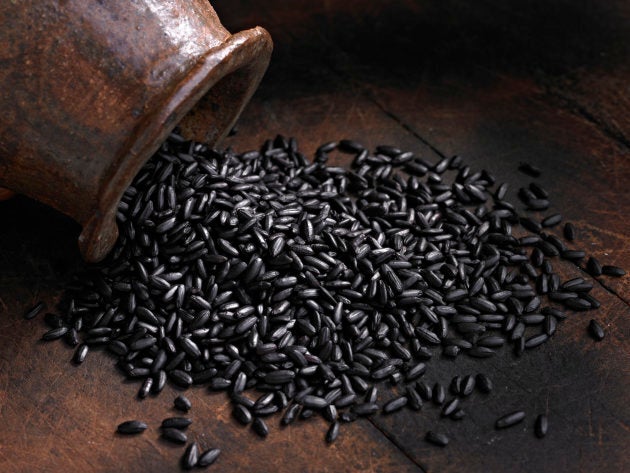
Rice is a staple ingredient in many of our kitchens and meals. While rice is a versatile and delicious grain, there are types of rice which are (way) more healthy than others.
If you're confused about the difference between brown rice, white rice, red rice and black rice, here is a breakdown of everything you want to know about rice and its nutritional content.
Is rice good for you?
"Yes it is, but it depends on portion size and how frequently it's being consumed," accredited practising dietitian and sports dietitian Chloe McLeod told HuffPost Australia.
"As a source of carbohydrate, it's one of those foods that is unfairly demonised somewhat. It's just about figuring out how much you require as an individual based on how much you're exercising and matching it accordingly."

According to McLeod the best time to eat rice is around physical activity -- when your body needs carbs to fuel and recover.
"For everybody, the best time to be consuming rice is around your physical activity, as this is when your body is going to be using up and requiring carbohydrates for performance and recovery," McLeod said.
"I wouldn't recommend eating a giant bowl of rice and sitting on the couch. This is probably going to end up being converted into fat. Whereas if you're having rice and doing your training session a few hours later, this would be a great way to incorporate rice into your diet."
What nutrition does rice provide?
The main nutrient all types of rice provides is carbohydrate, with the exact amount changing depending on the variety.
"There are varying different reports on how many carbs there is in rice. In 100 grams of uncooked brown rice it's 77 percent carbohydrate, in 100 grams of uncooked white rice it's about 79 percent carbohydrate, in 100 grams of black rice it's 72 percent carbohydrate, and red rice is 68 percent," McLeod said.
"In general, rice contains iron, magnesium, B vitamins and fibre, but the quantities of these do vary depending on the type of rice."

Why is brown rice better than white rice?
We know brown rice is more nutritious than white rice, but why is this exactly? It comes down to how quickly your body digests rice (and how full it will keep you over time).
"The main reason [brown rice is healthier] is around the glycemic index. GI refers to how quickly the body will digest a carbohydrate. We want that number to be as close to one as possible," McLeod said.
"If you're looking at quick-cooking basmati rice which is usually white, the GI is around 63. Whereas the GI of brown rice is about 50."
Let's take a closer look at the various types of rice and their nutritional profile.
What's the difference between white rice, brown rice, red rice and black rice?
White rice
"White rice has the outer layers -- the husk, bran and germ -- removed. As a result, this removes quite a lot of the vitamins and minerals, so it does have less nutrients when you compare it to some of the other varieties," McLeod said.
As mentioned above, white rice has a higher glycemic index which means your body breaks down white rice more quickly. White rice is also lower in fibre -- fibre is important for gut health and keeping you feeling full for longer.
"White rice is not something I would say is a 'bad' choice, but for most individuals white rice isn't the 'best' choice," McLeod said. "White rice tends to contain less vitamins and minerals."
White rice has different varieties, including basmati and jasmine, and they also have differing nutritional profiles. Tip: if you're going with white rice, avoid jasmine.
"With jasmine rice, it has a much higher glycemic index than even a standard white rice, so white jasmine rice is not the best choice," McLeod said.
"If you're choosing white rice, go for basmati rice which is a better option."

Brown rice
"Brown rice has the outer hull removed but it still has the bran layer and the germ. What this means is there is a lot more nutrients which are still left in the rice," McLeod said.
"Brown rice, similar to white, has different grain lengths -- short, medium and long. Brown rice is a good source of magnesium, iron and can be a good source of zinc. It also contains more fibre compared to white rice.
"When looking at the fibre content, brown rice has 3.1 grams of fibre per 100 grams, versus white basmati rice which has around one gram of fibre per 100 grams, versus standard white rice has around 2.1 grams of fibre."
Red rice
Red rice has become more popular and available over the last few years, and with good reason. It's arguably the most nutritious rice variety to eat.
"Red rice is different just because it's contains compounds called anthocyanins. We often think of anthocyanins in blueberries and other red-purple fruits and vegetables. The fact that red rice contains anthocyanins is a big positive as you're getting more nutrients," McLeod explained.
"You can buy red rice with the hull removed or with the hull still present. Red rice has pretty similar calorie content to the other rices -- for 100 grams of uncooked red rice there's 360 calories. Fibre content is much higher at 6.2 grams per 100 grams."
While red and brown rice are both healthy options, McLeod agreed red rice is a better choice.
"They are similar but I'd say red rice is better as it is a higher fibre choice and contains anthocyanins."

Black rice
Black rice has a nuttier and stronger flavour compared to white rice, and in terms of nutrition, black rice sits in between brown rice and red rice, McLeod said.
"With black rice, it's got about 4.5 grams of fibre per 100 grams, so it's higher than brown rice but not as high as red rice," McLeod told HuffPost Australia.
"Black rice tends to have a lower glycemic index, so it is more slow releasing and takes longer to digest. It's really nice in salads as it's not as sticky as some of the other rices."
What is a serve of rice?
When it comes to portioning out rice in meals, half a cup of cooked rice would be one serve.
"Often people have rice with stir fry and curries, and you can also mix it into salads, make rice porridge and even add cooked rice to smoothies for a nutty flavour and carbohydrate source," McLeod said.

